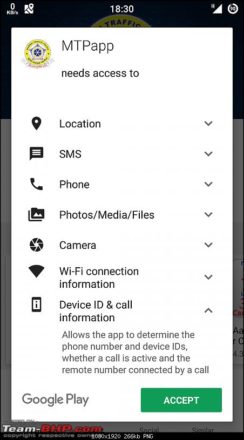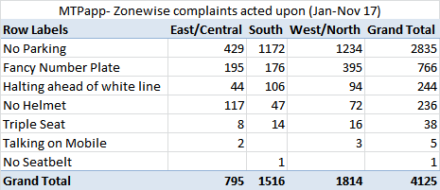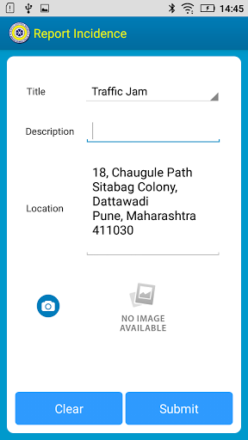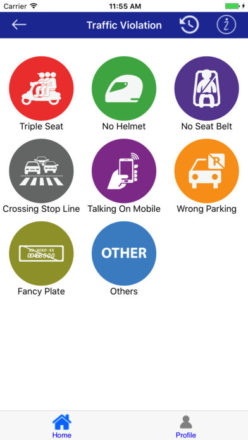The Mumbai Traffic Police launched an app called ‘MTPapp’ (developed by Sparken) in October 2016. A few months later used the services of Amitabh Bachchan to publicise it and even spammed a database of 50 lakh motorists requesting them to download the app. From the message they sent, which urged people to update their details and proactively check if they have been booked for traffic violation, it was clear that the app had two principle use cases. Get citizens, 1) to know about their own traffic violations and pay fine for vehicles they’ve registered and 2) allow them to report other’s violations and incidences. The rest of the functions – alerts, education etc., on the app were trinkets which unnecessarily bloated the system.
With the app, the Mumbai team finally caught up with their peers in Bengaluru, Chennai, Delhi and Hyderabad who had already implemented similar systems years ago.
But, issues plagued the app from the beginning – users couldn’t signup easily as the one time passwords (OTPs) required to register weren’t sent out on-time or arrived late. The Joint Commissioner of Police, Traffic brushed it off stating heavy adoption and server load. But, even today if you look at reviews on the google play or apple store, you’ll find innumerable comments about sign-in issues due to OTP. That’s just the beginning; issues relating to usability and flow plague the app and make it an extremely frustrating one to use.
A traffic violation can be reported by taking a picture via the app which combines it with the address tracked from the GPS and submits it to the server. For obvious reasons of manipulation, you can only submit pictures taken from within the app. The guidelines state that images had to be clear and sharp, the offense as well as the vehicle number of the offender has to be clearly visible in it for them to take any action on.
When they started off, violations like signal jumping, rash driving and taxi service denials could be reported. Now, how will one click images of such violations as per their guidelines a phone camera? Probably realising this, the above violations were removed within months of the app launch. Sample the following UI and user flow changes in the ‘Violation Report’ page over the months. List of violations was gradually pruned, though you could report them under other, not many people would be aware of such list of violations.
There are other bugs and usability issues which make the app slow to use. The app was slow to pick the address basis the GPS. A text description is compulsory along with the violation report. Many a times, the central server to which violation complaints were being sent wouldn’t respond. And, as the app doesn’t keep a copy of the picture taken or the complaint submitted locally on the phone, if the submission failed for any reason (usually due to server issues at their end), it cannot be resubmitted.
Then, there are privacy concerns as the app requests for access to phone, SMS and media. If permissions are granted, they can access all call information, messages and data on your phone via the app. What privacy safeguards were built into app or at their end are unknown, but going by the app development history it’s not much. As an aside, the first versions acted as Vodafone store locators as they had a list of Vodafone stores where the challan and fine payments could be made.

Finally, there are actions taken from their end which point to how bad the overall experience with the app is. Once you lodge a complaint via the app, a complaint reference number is sent back via SMS and a subsequent followup SMS is sent once the grievance has been acted upon. Now, it’s up to the whims and fancy of the person at the other end on how the complaint is lodged. A user can take up to three photographs for one complaint. Now, each of the photographs can be for a different vehicle violating the same rule. But, they usually the complaint is taken for the first photo and the rest are ignored.
Such issues make you doubt the intention of the designers of the app. Not surprisingly, someone raised a RTI query on the number of complaints lodged via the app and the action being taken by MTP. The results aren’t surprising


87% of the complaints have been ignored stating “no evidence” (response here). This essentially points to either a) the quality of photos being submitted given the violation or b) the way complaints are being processed at the back end. Either way, it’s high time, someone at Mumbai Traffic Police take notice of how bad the app has been designed for the violations they seek to capture as well as the actions they are taking.
Armed with the RTI data, when a newspaper questioned the Mumbai Traffic Police, some senior official termed the app, a pilot project with some teething problems. So much for spamming 50 lakh motorists!






